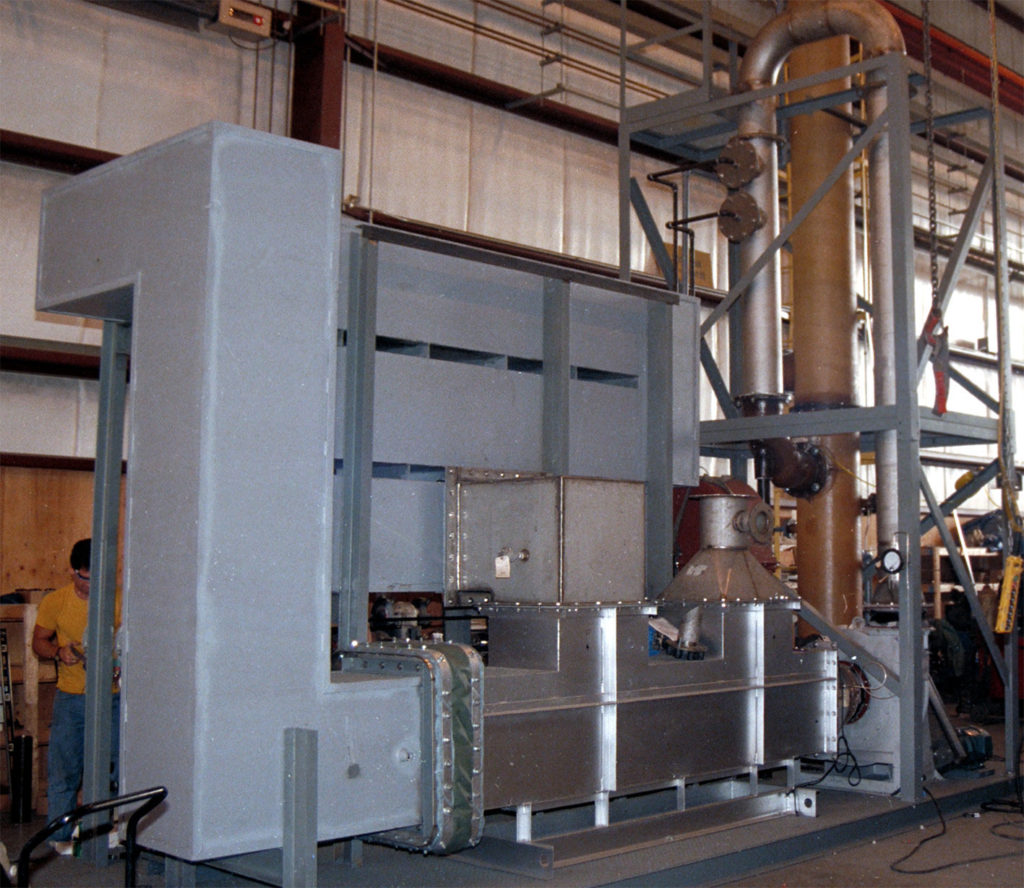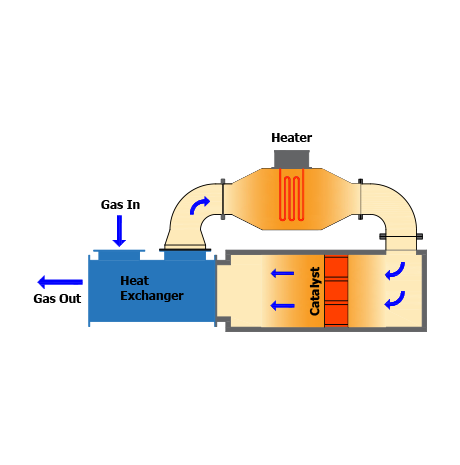As the amount of organics in the air decrease, you have to add more supplemental heat. One way to minimize this is to use a Catalyst. Catalysts reduce the temperature required for combustion. For example the operating temperature for a catalytic unit may be in the 600°F / 300°C range. This would reduce the operating cost compared to Direct Thermal Oxidation if the VOC is very low in concentration. Branch can help you evaluate the best choice.
Some compounds containing Nitrogen (such as Ammonia) use catalytic destruction because there are specific catalyst developed to destroy Ammonia without creating N0x. When destroying Nitrogen containing compounds, you can potentially create N0x emissions instead. The use of a special catalyst eliminates this possibility.
There are definitely applications where a Catalytic unit is the best choice and it is a benefit to you to use a company like Branch to help you decide which is the lowest cost option for you.
Energy Recovery
Catalytic Oxidizers are specifically best suited for organic concentrations of 2500 ppm or less. The high concentrations of VOC can usually be handled by other technologies. The low level VOC does not provide enough energy and the catalyst can operate at a temperature of 500° - 600°F / 250° - 300°C approximately. It will depend on the particular compound and the destruction efficiency.
We still heat the gas directly by using a natural gas burner (or other gaseous fuel) but then instead of just raising the temperature up to the higher value, we need to raise the temperature enough so that as the gas passes over the catalyst it reacts and is converted to Carbon Dioxide and water vapor.
The energy efficiency of the Catalytic unit can be increased by adding a Air-to-Air Heat Exchanger. The Air-to-Air Heat Exchanger is similar to the one used on a Direct Thermal.
Catalytic units operate at low temperature which allows the use of a less expensive type of heat exchanger.
- All performance levels are guaranteed.
- Any design configuration can be provided, including vertical and horizontal.
- All safety features with UL, FM or other approved components as needed.
- Complete engineering, including tail gas treatment from one source.
- Shop fabricated capacities of up to 25,000 cfm / 42,500 m3/h are available.


